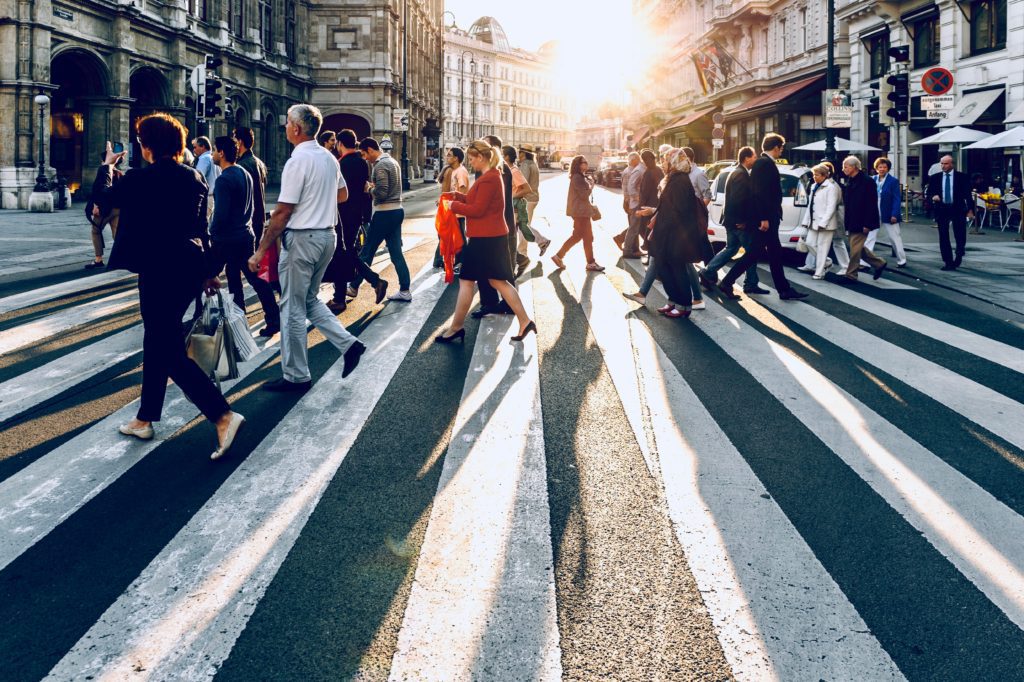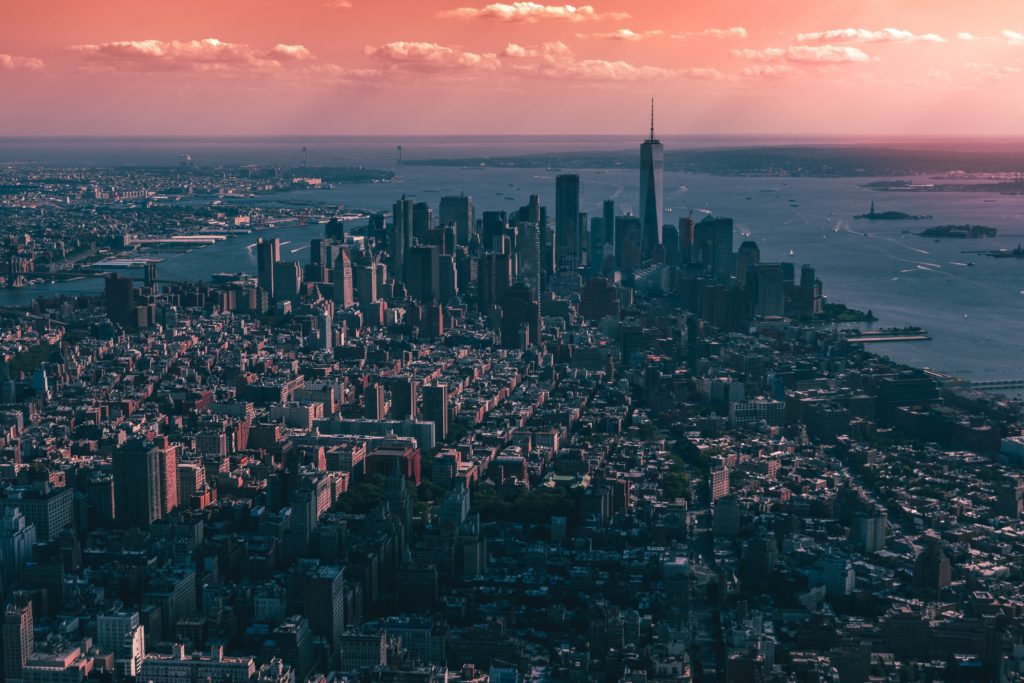As summer 2016 came to an end, the comedy writer Mike Sacks penned a lifestyle piece for the New York Times detailing what it’s like to live with obsessive-compulsive disorder in New York City. On first read, the piece feels like another relatable story laced with the kind of self-deprecating confessional comedy we’ve come to expect from a genre that’s important for obvious reasons but has also verged on cliché over the past few years: the mental health memoir piece whose major statement is “You didn’t know this about me, but I’ve been struggling.”
But, if we look more closely, there’s something of greater interest in Sacks’ piece. It suggests that mental health is a geographical problem as much as anything else: in what ways can the place you live make your symptoms more or less prominent? He writes about OCD, but the implication is that the geographic effect spans all of the feelings and behaviors commonly slapped with the label mental illness. Here is Sacks’ comparison of the years he spent in the suburbs with his time in such a big city:
The ’burbs are not a bad setting for O.C.D. — serene, very few surprises. A stranger is unlikely to vomit near you. Chances are low that a fellow commuter will sneeze in your face.
New York, where I prefer to live, is another story. It’s a difficult city for the handicapped, the elderly, the poor and anyone who lives beyond the reach of public transportation. I am able-bodied and relatively young, and I live close to subway stations and bus stops. I’m lucky.

His acknowledgement of how hard life can be in NYC if you’re handicapped, elderly, or poor is genuine; but it’s also a setup for what he’s about to say. Because, of course, Sacks is unlucky in another way. He’s able-bodied, but his mind is a trickster. He’s stuck, like many of us, between seeing the things he does as symptoms of mental illness and just seeing them as part of who he is– simply the way he likes to do things. Let’s read a bit further:
One of the intoxicating things about living in the city is that it’s forever requiring Da Beast to add new and exciting tics to its arsenal. We’re both out of our element, constantly on guard, wending our way through a barrage of horror triggers. New York has become the setting for free immersion therapy.
The details of Sacks’ daily life reflect a wide range of OCD symptoms, which he semi-lovingly lumps together as Da Beast. (Clinicians would call this defusion, because framing one’s thoughts as a separate entity can help detach them from the emotions that usually follow closely.) Da Beast is immediately recognizable to those familiar with obsessions and compulsions, and probably infuriating to anyone who isn’t. Why can’t Sacks just ride the subway without using a glove to hold on to the rail, or ignore the vomit produced by a nearby kid and keep talking with his friend, like the rest of us?
In what ways can the place you live make your symptoms more or less prominent?
The point isn’t to suggest that it’s easy to live with OCD outside of a city. But for Sacks there are simply more triggers for his obsessions in the uncontrolled environment of a large city. Even the most meticulous routine (studies suggest both that people with OCD are more locked into routines and that these routines are less productive thanks to compulsive behavior) will be interrupted because there are so many more variables. People tend to do things publicly in big cities that they might not do in the suburbs, partly because there’s nowhere else to do them– there’s no such thing as a truly private place in a city. After all, besides furthering racial segregation, one of the original aims of the suburbs was to give people distinct spaces where they wouldn’t have to interact with anyone outside of their household.
Nor is Sacks saying that life in the suburbs is better– he says a few times that he likes NYC a lot, and his overall tone reflects his half-sarcastic statement that the constant addition of new triggers in the city is intoxicating. First of all, everything in OCD treatment suggests that avoiding anxiety is one of the surest ways to make that anxiety worse over time. And being in the suburbs can exacerbate other aspects of mental illness. Unsurprisingly, the social isolation in many suburbs– which tend to have fewer public spaces and a clearer distinction between people’s private domains– fosters loneliness.
Further, some psychologists say that people naturally feel more at ease in cities, which are planned with a certain level of geographic order in mind (whereas suburbs can feel more scattered and detached). Admittedly, these claims feel like they require further investigation, because we could just as easily suggest that the relative anonymity and hectic nature of a city can promote loneliness and agitation. But anyone who has lived in a suburb knows that you can much more easily find yourself cut off from other people.

But, even if living in a city has potential benefits and complications for people struggling in all kinds of ways, what’s special about New York City? It has a ton of people– 8.6 million of them. That’s almost 5 million more than Los Angeles, the second biggest city in the US. But New York City isn’t actually that big in terms of land area. In fact, it’s only the 24th largest city in the United States by square mileage. Why am I listing a bunch of statistics? Just for fun…
And also because they lead to something more interesting: New York City has the 6th highest population density of any city in the US. All of the top 8 densest cities, and 12 of the top 20, are in the New York City metropolitan area. There are tons of people living in small spaces. Though admittedly half-baked, a theory is lingering in the shadows. Of those variables we mentioned earlier that lead to uncertainty, the most prominent is other people. The reason people tend to love visiting NYC is the same reason lots of people who live there feel like they need to move away after a few years: there’s so much going on. Lots of “exciting and new” things for anybody’s beast to feed on.

Many of the things that lift our mood also awaken our anxiety. Being with other people, finally going to the gym after a few lazy weeks, drinking espresso: feeling less down means getting energized, and sometimes getting energized means feeling anxious too. Cities inject all kinds of energy into our daily experience, for better but also for worse. In New York City the scale is that much bigger, the vomit that much more common.
If there’s more to encourage anxious responses, though, there can also be more access to certain kinds of resources. With its high population, abundance of universities, and countless mental health organizations, NYC is one of the nation’s (and the world’s) hotspots for OCD treatment. Unlike in rural areas, just about anyone in NYC is probably within an hour and a half (by public transit, if the trains aren’t stopped) of an OCD specialist.
But even given the significant advantage of relative proximity, cost remains a huge barrier. With a cost of living about 70% higher than the US average, it’s hard enough to make ends meet that adding expensive OCD treatment seems like a distant dream for most people. You might be able to find a clinician charging something near the national average, but that’s still a couple hundred dollars per hour and you probably won’t find cheaper appointments. Still, many clinicians offer sliding scales based on their clients’ income level, and this can be of tremendous help.
Besides the real things we just mentioned, much of this is only theoretical. But whether or not population density has anything to do with it, there’s an undeniable difference in the ways cities and suburbs affect your mental health. Even if you don’t have OCD, or live somewhere else, or rarely spend time in cities, your environment shouldn’t be underestimated as a factor in how you feel. And adopting one aspect of Sacks’ approach might be of use. Let’s read one more section:
I wash my hands up to 25 times per day. I perform intricate routines and complicated movements to avoid becoming contaminated. With what, exactly? Nothing specific, just a murky sense of something bad. But I also perform these tasks so that friends and family members — and even potentially you — don’t become contaminated.
It’s a lot of pressure, but I’m no hero. You can thank me later.
He’s being funny about things, and while it’s not a replacement for treatment, humor is sometimes the best (and most feasible) antidote for a condition that makes you want to take things far too seriously. Sacks calls NYC the “setting for free immersion therapy,” and this is true in a way. But you can be anxious anywhere, and learning to laugh about it is a good way to start gaining a little distance on the beast. It may still be there with you on the subway, but maybe it’ll have to ride in the next car.

If you or someone you know is struggling with OCD, schedule a free call today with the NOCD clinical team to learn more about how a licensed therapist can help. At NOCD, all therapists specialize in OCD and receive ERP-specific training. ERP is most effective when the therapist conducting the treatment has experience with OCD and training in ERP.

